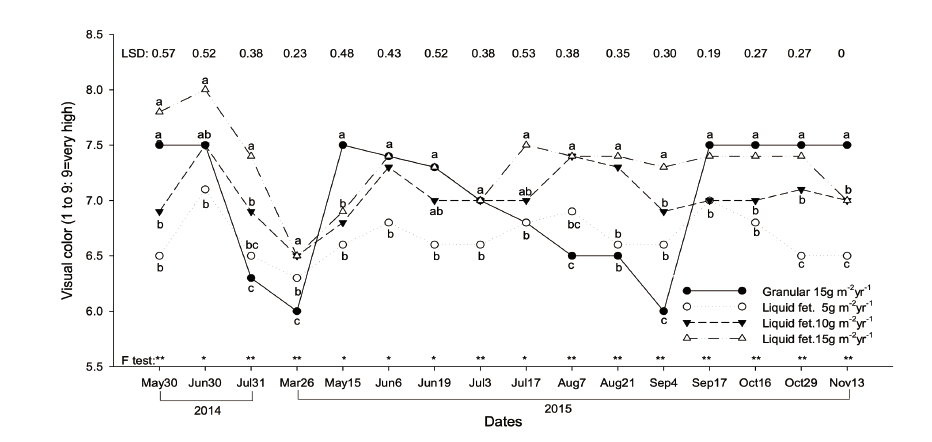Abstract
This study was conducted to investigate the effects of liquid fertilizer foliar application on the growth of Kentucky bluegrass. Lysimeter was established at the experimental site for the measurement of nutrient leaching as well as top and root growth of turfgrass. The liquid fertilizer used for the foliar application (FFA) was the compound fertilizer containing N.
Figures & Tables

Fig. 1. Visual color of Kentucky bluegrass at the different foliar fertilization rates in 2014 and 2015. Least significant difference (LSD), <=0.05 (*), <=0.01 (**), not significantly (NS).


